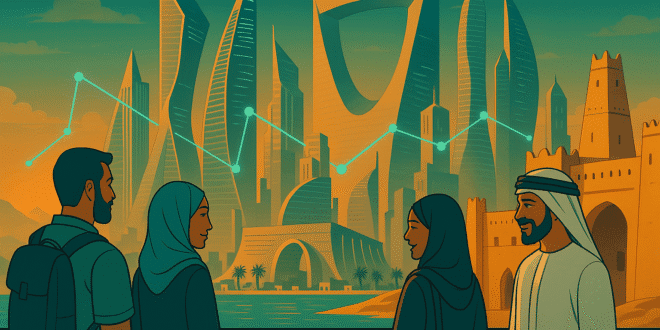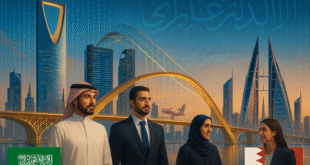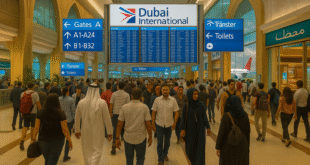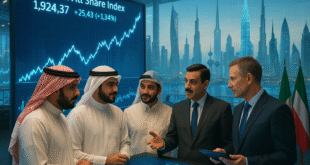I. Introduction
Saudi Arabia’s Vision 2030 is rapidly redefining the Kingdom’s economy, society, and global image, with tourism at its core. As the Gulf’s most ambitious economic diversification program, it has become a catalyst for growth across the region. In this blog, we explore how Saudi Arabia’s Vision 2030 is transforming tourism and reshaping the Gulf’s future.
II. Context & Background
Launched in 2016, Saudi Arabia’s Vision 2030 aims to reduce the Kingdom’s dependence on oil by diversifying its economy. Tourism, entertainment, and technology are among the key pillars driving this transformation.
This bold strategy has captured the attention of the Gulf Cooperation Council (GCC), as it impacts trade, investment, and regional collaboration. For Saudi Arabia, tourism is not just an economic initiative — it’s a cultural renaissance designed to attract 100 million visitors annually by 2030.
III. Main Updates / Core Insights
Saudi Arabia has committed billions of dollars to tourism under Vision 2030, with several mega-projects underway:
✅ The Red Sea Project
A $50 billion luxury tourism initiative featuring resorts, marine parks, and pristine islands along the Red Sea coast.
✅ NEOM
A futuristic $500 billion smart city stretching across the desert and mountains, blending technology, nature, and sustainability.
✅ Diriyah Gate
A cultural heritage site showcasing Saudi history and attracting global tourists to its UNESCO-listed locations.
According to the Ministry of Tourism, Saudi Arabia saw 27 million visitors in 2023, a significant jump from previous years. The country also introduced its eVisa program, allowing tourists from over 60 countries to visit with ease.
Fahd Hamidaddin, CEO of the Saudi Tourism Authority, noted, “Tourism is no longer just a visitor economy — it’s a driver of jobs, innovation, and culture.”
IV. Regional Impact
The impact of Saudi Arabia’s Vision 2030 extends beyond its borders:
- UAE has accelerated its tourism campaigns, promoting Dubai and Abu Dhabi to compete for regional visitors.
- Qatar is leveraging its post-World Cup momentum by expanding its entertainment and hospitality sectors.
- Oman and Bahrain are investing in heritage tourism, inspired by Saudi Arabia’s Diriyah and AlUla models.
Saudi Arabia’s push toward regional collaboration is also visible through initiatives like the GCC Unified Visa, making multi-country travel easier for tourists exploring the Gulf.
🔗 Related Read: GCC Unified Visa Boom: How One Visa Could Transform Gulf Travel
V. Conclusion
Saudi Arabia’s Vision 2030 is more than a strategy — it’s a bold reimagining of what tourism, culture, and economic diversification can achieve in the Gulf. As projects like NEOM and the Red Sea near completion, the Kingdom is well on its way to becoming a global tourism hub.
Stay tuned to The Credible Story for the latest updates on Gulf tourism and economic shifts.
 The Credible Story Trending stories that keep you hooked
The Credible Story Trending stories that keep you hooked




